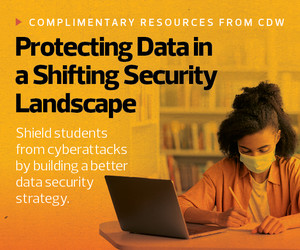Keep Cybersecurity Information Simple in Communicating with Parents
Consider that most of your audience doesn’t have the same deep technical knowledge as your cybersecurity team. Do what you can to explain complex processes in simple terms, avoiding jargon and unnecessary details. Put the information in terms that relate to parents’ experiences with technology and why it should be important to them.
“Succinct communication is always essential. When messages are particularly important, separating them from other communication so that they stand alone helps,” Russeau says. “Tie what you are hoping they understand to their personal use of technology and electronic data.”
For example, to convey the importance of using strong passwords and multifactor authentication, cite real-world examples of organizations that experienced data breaches and what happened to their users.
“Boil it down to the fact that if we have a data breach and the kids’ Social Security numbers get released, they may have credit cards or loans taken out in their name,” Lackey says.
LEARN MORE: Cybercriminals are attacking networks using cloud storage services.
Break Information Into Bite-Sized Chunks
Don’t force parents to bite off more than they can chew by sending lengthy memos or emails with 10 attachments. Each piece of information you send to parents should have a sharp focus. Touch on only what parents need to know, and discuss key takeaways at a high level.
“It’s really a matter of getting the right information to the right people at the right time,” Lackey says.
Another reason to be succinct: If you volunteer too much about your security posture, you risk bad actors using that information to find holes in your system. The idea is to give parents enough to understand how your data is being protected without sharing the whole process.
Leverage Multichannel Communication When Sharing Information
To reach as many people as possible, use every avenue of communication at your disposal: social media, email, phone calls, blog posts or town-hall discussions. Just be careful not to flood their inboxes. Too much communication may result in parents tuning out, Lackey says. A more effective strategy balances emails and phone calls with indirect communication, such as social media.
UP NEXT: These districts conduct parent-teacher meetings virtually.










